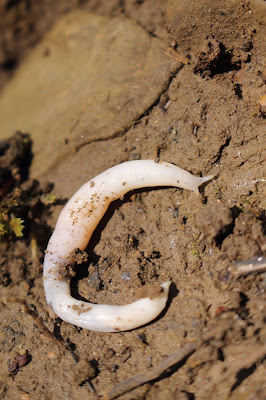One of the benefits of this Covid-19 lockdown is that restricted movement shoe horns you back into your local environment. Gone are the drives to other places, in are the walks to familiar places.That said, I'm beginning to realise those familiar local places may not so familiar after all.
As you can tell from recent posts I've been taking a 10 minute walk to the woodland I can see from my home, but on this occasion I pushed on beyond its leafy glades with intermittent chiffchaff and distant redstart and out into the agricultural landscape that bleeds into the upland environment of Mynydd Garn-wen and the southern extremities of the Brecon Beacons National Park. The link between Company's Wood and Mynydd Garn-wen is Lasgarn Lane, a quiet thoroughfare visually more akin to lowland Monmouthshire than the chaotic vista's of the South Wales valleys. Bazaarly, this lane has an almost a chocolate box quality. Flanked by a hedgerow on both sides it supports a hedge bank adorned with bluebell, cow parsley and greater stitchwort. Surely in the days before 24 hour TV and computer games this lane will have echoed the sounds of children out for a walk after Sunday chapel, the girls returning with posies of wildflowers, the boys with a fresh song thrush egg for their collection.
This lane with its parallel hedge weaves through a farmland backdrop of improved grassland and mature trees. The hedgebank is crammed with herbage like the back room of a charity shop, punctuated only by field gates and the odd wooden stile. My New Naturalist book of hedges tells me its possible to age a hedgerow by the composition of woody species. I started to look, not to apply the aging metric in earnest, like some fresh faced undergraduate - although I sense field skills have dropped of the agenda of ecology degrees - but just to a get feel for its possible longevity. There was field maple, hawthorn, blackthorn, elder, holly, beech, sycamore, sessile oak, hazel, dogwood, rowan and common lime. Elsewhere in this lush green corridor were many mature trees shaped in a manner that suggest active management was more prevalent in the past. This walk certainly brought out the Oliver Rackham in me.













